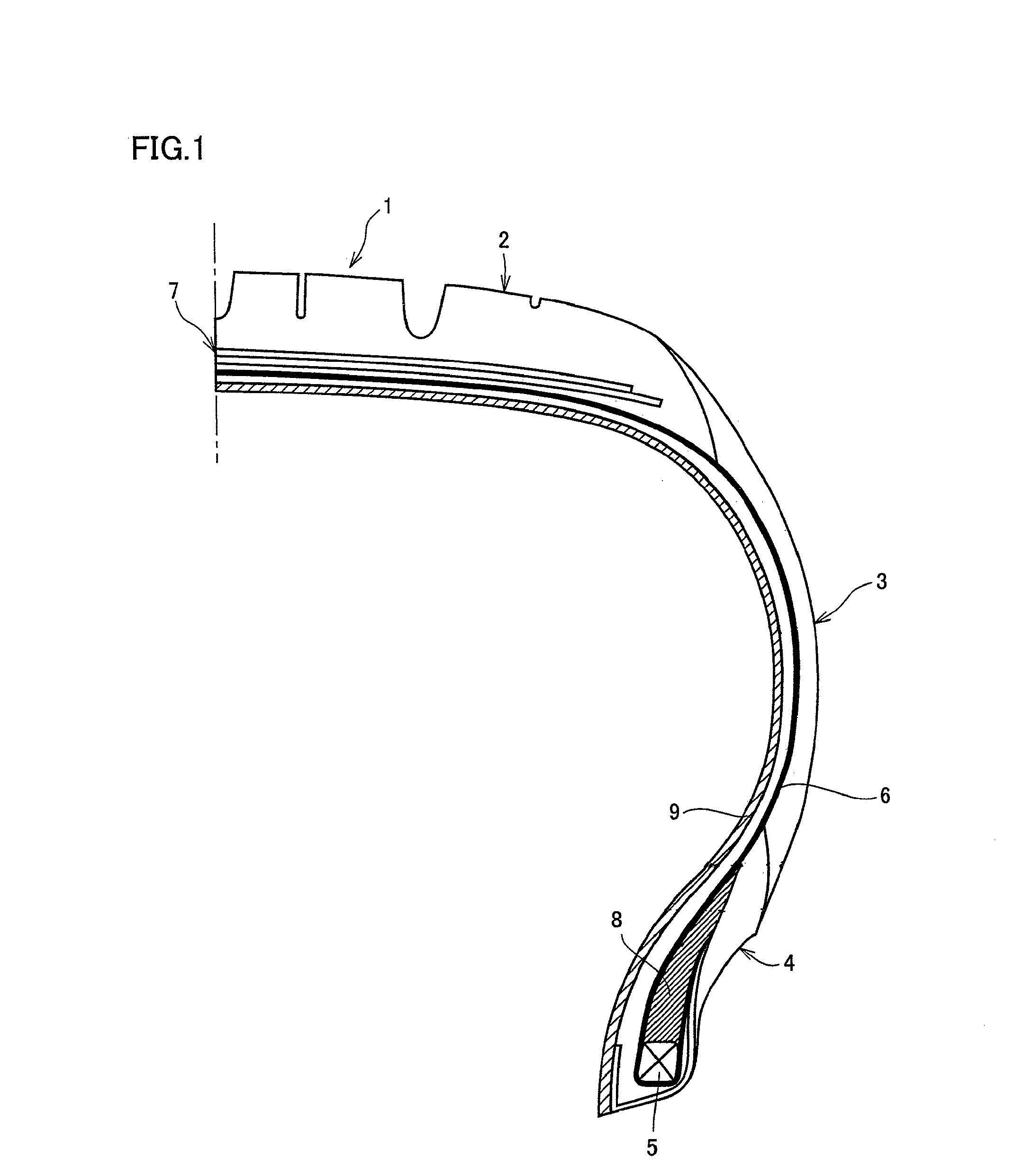Pneumatic tire
a pneumatic tire and tire body technology, applied in the field of pneumatic tires, can solve the problems of affecting the finishing gauge of the inner liner in the resulting tire product becomes thinner than the designed gauge, and the user's impression of bad appearance, so as to improve the durability performance of the tire, improve the adhesion between the first layer and the carcass ply, and improve the effect of durability
- Summary
- Abstract
- Description
- Claims
- Application Information
AI Technical Summary
Benefits of technology
Problems solved by technology
Method used
Image
Examples
examples
[0084]
[0085]The thermoplastic elastomers (SIB, SIBS, and SIS) used for manufacturing of polymer layer stacks each formed of the first layer and the second layer in the present invention were prepared in the following manner.
[0086][SIB]
[0087]Into a 2L reaction container having an agitator, 589 mL of methylcyclohexane (dried with molecular sieves), 613 ml of n-butyl chloride (dried with molecular sieves), and 0.550 g of cumyl chloride were added. The reaction container was cooled to −70° C., and then 0.35 mL of α-picoline (2-methylpyridine) and 179 mL of isobutylene were added. Further, 9.4 mL of titanium tetrachloride was added to start polymerization. They were reacted with each other for 2.0 hours while stirring the solution at −70° C. Next, 59 mL of styrene was added to the reaction container, and reaction was continued for another 60 minutes. Thereafter, a large amount of methanol was added to stop the reaction. After removing a solvent and the like from the reaction solution, th...
PUM
| Property | Measurement | Unit |
|---|---|---|
| mass % | aaaaa | aaaaa |
| thickness | aaaaa | aaaaa |
| thickness | aaaaa | aaaaa |
Abstract
Description
Claims
Application Information
 Login to View More
Login to View More - R&D
- Intellectual Property
- Life Sciences
- Materials
- Tech Scout
- Unparalleled Data Quality
- Higher Quality Content
- 60% Fewer Hallucinations
Browse by: Latest US Patents, China's latest patents, Technical Efficacy Thesaurus, Application Domain, Technology Topic, Popular Technical Reports.
© 2025 PatSnap. All rights reserved.Legal|Privacy policy|Modern Slavery Act Transparency Statement|Sitemap|About US| Contact US: help@patsnap.com



